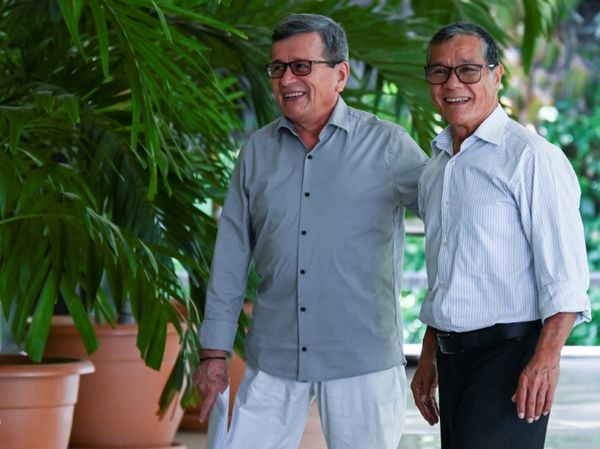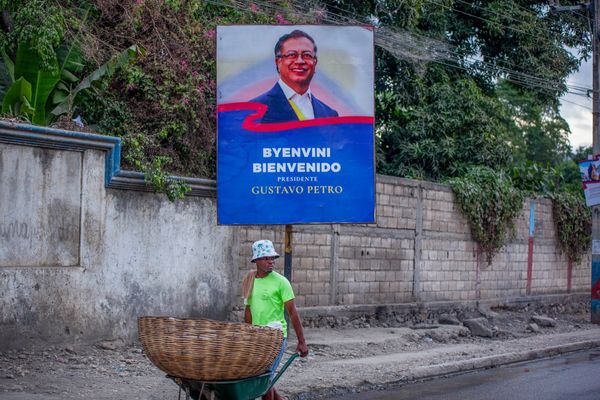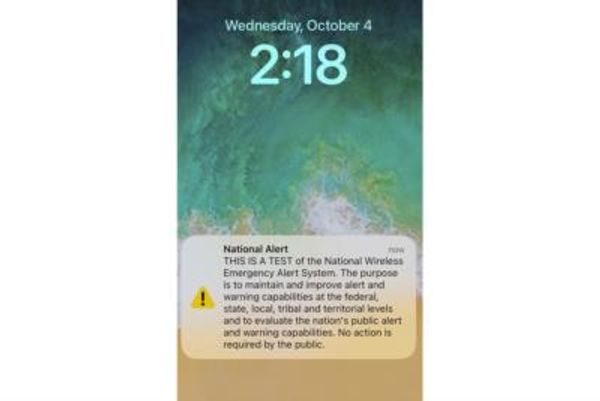
Alvaro Enciso plants three or four crosses each week in Arizona's desert borderlands, amid the yellow-blossomed prickly pear and whip-like ocotillo, in honor of migrants who died on the northbound trek.
Each colorful wooden memorial denotes where a set of bones or a decomposing body was found. Over eight years, the artist has marked more than 1,000 locations across public lands dotted with empty black plastic water jugs and camouflage backpacks beneath circling turkey vultures.
“Anything out here can kill you," Enciso said. "A blister, a snake, not enough water.”
Protecting migrants and honoring the humanity of those who died on the perilous trail is a kind of religion in southern Arizona where spiritual leaders four decades ago founded the Sanctuary Movement, a campaign to shelter Central Americans fleeing civil war, and scores of volunteers carry on their legacy today.
Faith-based groups working in migrant activism run the gamut from the Tucson Samaritans, which leaves lifesaving caches of water, food and other provisions in the remote wilderness, to Catholic Community Services of Southern Arizona, which operates a shelter, to Methodists providing asylum-seeking families with legal aid and a place to stay, to name a few.
Enciso’s art project, “Where Dreams Die,” fits squarely in that spiritual tradition, though he believes there's nothing overtly religious in memorializing the dead.
On a recent day he placed a golden cross where the bones of an unknown male were found Sept. 24, 2020, amid the jumping cholla cactus. The cause and approximate year of the man's death, about a mile north of state Highway 86, are undetermined.
“Can you imagine what their families go through, not knowing what happened to them?” Enciso said.
Volunteer Michele Maggiora kissed a fist of fresh sage and faced east, south, west and north, then held the fist down for the Earth Mother and up for the Sky Father in prayer.
“I feel like we have to recognize that something happened here,” Maggiora said.
Such activism has roots in the 1981 founding of the Sanctuary Movement, which spread to a dozen Tucson churches and synagogues and more than 500 U.S. Protestant Catholic and Jewish congregations, drawing on the ancient tradition of protecting people inside houses of worship.
Now 81 and retired, the Rev. John Fife III was pastor at Tucson’s Southside Presbyterian Church back then when his Quaker friend Jim Corbett told him Central Americans were fleeing to the U.S. to escape violence back home.
The men recalled the Book of Matthew 25:35: “For I was hungry and you gave me something to eat, I was thirsty and you gave me something to drink, I was a stranger and you invited me in.”
Soon Fife and Corbett, who died in 2001, were smuggling Central American migrants into the U.S. and sheltering them in their homes, despite their wives’ protests. The church hosted some 13,000 asylum seekers in the '80s, with up to 100 people sleeping on the floor on a given night.
“I felt that if I didn’t help, I would have to resign as pastor,” Fife said recently in Southside’s worship hall, which was modeled after an indigenous ceremonial structure known as a kiva.
Fife was convicted in 1986 of violating U.S. immigration laws and served five years' probation, but that didn't deter him.
In 2000 he helped create Humane Borders, which maintains water stations with 55-gallon (208-liter) plastic blue barrels accompanied by a blue flag visible from a distance. Two years later he co-founded Tucson Samaritans, a ministry of Southside, which along with partner organizations in Ajo and Green Valley-Sahuarita sends volunteers into the wilderness to leave water and food. Fife also had a hand in the 2004 creation of No More Deaths, which staffs remote aid camps for weeks at a time.
“We couldn’t stop what we were doing, because people’s lives were on the line,” Fife said.
Many of those volunteering with the groups are of retirement age, like Gail Kocourek.
Every week the Tucson Samaritan volunteer drives donations of clothes and food to Casa de la Esperanza, a new daytime migrant help center just south of the border in the Mexican town of Sasabe where about 50 migrants a day can get a meal, a shower and clothes. They usually sleep at hotels or guest houses in town.
“I don’t think anyone deserves to die for trying to make a better life for their family,” Kocourek said.
Often traveling there as well is Dora Rodriguez, who was among 13 Salvadorans who survived in 1980 when 13 others died in the broiling sun near Organ Pipe Cactus National Monument. Then 19, she remained in Tucson and eventually became an American citizen.
“And now, 41 years later, people are still dying out here in the desert,” said Rodriguez, who formed a nonprofit called Salvavision to aid migrants in Arizona and encourage people in Central America not to make the dangerous journey. “The only difference now is that there is no longer a civil war. But you still have the aftermath of war — the gangs, crime, corruption.”
Rampant poverty is another reason for leaving, according to Vicente Lopez, a 19-year-old from Guatemala who was staying elsewhere in town. “It’s because we’re so poor.”
Groups that seek to restrict immigration, such as the Washington-based think tank Center for Immigration Studies, contend the border wall and other barriers are a better way to keep deaths down by keeping migrants out.
“I have no question about the good intentions of these groups, and we don’t want people dying in the desert,” said Andrew Arthur, a former immigration judge and the center’s resident fellow. “But you don’t want to create a magnet for people expecting to find water.”
For its part, the Border Patrol in a recent statement on the 20th anniversary of the deaths of 14 people in the Devil's Highway region southeast of Yuma, noted the danger remains: “Smugglers and guides regularly risk the lives of the migrants who pay them thousands of dollars for help to get to the United States.”
Humane Borders, which works with Pima County chief medical examiner Dr. Greg Hess to map the discoveries of human remains, in 2020 documented 227 deaths, including those in Maricopa County, the highest in a decade after the hottest, driest summer in state history. Hess' office received the remains of 79 apparent border crossers this year as of late May, and activists fear 2021 could prove especially treacherous with large numbers of people launching journeys.
Customs and Border Protection reports that apprehensions of migrants are way up, with 20,246 such encounters in the Tucson sector alone in April — a 674% increase over the same month last year — out of 178,622 along the entire four-state border. Rescues of migrants found in dangerous areas are also up.
“I’m not looking forward to this summer,” said Douglas Ruopp, chairman of Humane Borders. “No matter what we do, people keep dying."
Yet the danger doesn't dissuade people like Josue Hernandez Ruiz, a tour guide from the Mexican resort of Huatulco who was laid off during the coronavirus pandemic and ventured north seeking to support his wife and two children. After staying at a guest house in Sasabe, he and a friend planned to set out into the desert without a guide.
“I’m going to use my phone,” Hernandez Ruiz said. “It has GPS.”
In Tucson, activists regularly gather at a shrine to pray for migrants who didn't survive that journey.
The local cumbia band Vox Urbana pays homage by writing and recording songs about migrants, including one about a transgender asylum seeker named Karolina.
“We are a community of migrants," guitarist and vocalist Kike Castellanos said, "and it is important to tell the stories of our community.”







